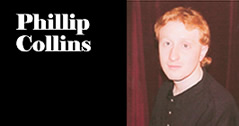PART 4
by Phillip D. Collins
August 12, 2009
NewsWithViews.com
Understanding the Epistemological Foundations of Scientific Totalitarianism
As mythmakers, modern scientific materialists have sought to supplant the traditional religious systems of the past with their own theocratic order. This new configuration of society demands a new myth. Rene Guenon eloquently synopsizes: "Thus it comes about that there has grown up in the 'scientistic' mentality. . .a real 'mythology': most certainly not in the original and transcendent meaning applicable to the traditional 'myths,' but merely in the 'pejorative' meaning which the word has acquired in recent speech" (151).
According to the late Joseph Campbell, science functions as a cosmological myth: "[T]he second function of a mythology is to render a cosmology, an image of the universe, and for this we all turn today not to archaic religious texts, but to science" (116). The image of the universe as rendered by science is an inherently mutable one. Matter, from the scientistic vantage point, is malleable and can be manipulated through the gnosis of science. Comenius articulated this scientistic vantage point in his 1668 tract entitled, The Way of Light.
Interestingly enough, the manifesto was dedicated to the British Royal Society, which was, arguably, a Masonic institution:
Virtually all the Royal Society's founding members were Freemasons. One could reasonably argue that the Royal Society itself, at least in its inception, was a Masonic institution - derived, through Andrea's Christian Unions, from the "invisible Rosicrucian brotherhood.” (Baigent, et al, 144)
The significance of this fact comes into clearer focus when one considers the fact that Freemasonry originated with "a network of Humanist associations" throughout early-Renaissance Italy (Martin 518-19). These early humanists, who would eventually co-opt the operative Mason guilds in the late 1500s, transplanted the concept of gnosis (i.e., special knowledge, not standard epistemological knowledge) within the ontological confines of the physical universe:
Whether out of historical ignorance or willfulness of both, Italian humanists bowdlerized the idea of Kabbala almost beyond recognition. They reconstructed the concept of gnosis, and transferred it to a thoroughly this-worldly plane. The special gnosis they sought was a secret knowledge of how to master the blind forces of nature for a sociopolitical purpose. (519-20)
Famous atheist philosopher Bertrand Russell reiterated this theme of mastering the "blind forces of nature," emphasizing science as the new gnosis that could achieve such an end:
The way in which science arrives at its beliefs is quite different from that of medieval theology. Experience has shown that it is dangerous to start from general principles and proceed deductively, both because the principles may be untrue and because the reasoning based upon them may be fallacious. Science starts, not from large assumptions, but from particular facts discovered by observation or experiment. From a number of such facts a general rule is arrived at, of which, if it is true, the facts in question are instances. Science thus encourages abandonment of the search for absolute truth, which belongs to any theory that can be successfully employed in inventions or in predicting the future. "Technical" truth is a matter of degree: a theory from which more successful inventions and predictions spring is truer than one which gives rise to fewer. "Knowledge" ceases to be a mental mirror of the universe, and becomes merely a practical tool in the manipulation of matter. (13 - 15; emphasis added)
The manipulation of matter is a consistently recapitulated theme among sociopolitical Utopians. This theme gains greater significance when one ponders the etymology of the term "Technocracy." Not surprisingly, most sociopolitical movements throughout history have sought to instantiate technocratic forms of governance. "Technocracy" is a very interesting appellation to assign such a form of governance. It is attached to the Greek word techne, which means "craft." Simply defined, "crafting" is the skillful creation of something. Hence, expressions such as "outstanding craftsmanship" or a "master of the craft." In the context of sociopolitical Utopianism, "crafting" is the skillful creation (or, more succinctly, re-sculpting) of reality itself. The "special gnosis" of science has provided the means through techne. Mark Pesce, co-inventor of Virtual Reality Modeling Language, elaborates: "The enduring archetype of techne within the pre-Modern era is magic, of an environment that conforms entirely to the will of being" ("Ontos and Techne"). Commenting upon techne's role in manipulating matter, Pesce writes: "Each endpoint of techne has an expression in the modern world as a myth of fundamental direction--the mastery of matter. . ." (ibid; emphasis added).
From this distinctly occult vantage point, technology, which represents the practical application of science, is a form of sorcery for manipulating and mastering matter. Modern science views matter as the primary substance that constitutes the fabric of the physical universe. In turn, modern science views the ontological confines of the physical universe as the totality of reality. Thus, he who has mastered matter through the gnosis of science has mastered reality itself. Reality becomes a malleable lump of clay to be molded by the omnipotent fingers of the scientific adept. Of course, such an adept would qualify as a deity. After all, shaping reality was originally the province of God. According to semiotician Elizabeth C. Hirschman, man's apotheosis lies at the core of science as a cosmological myth:
The rise of Science as a cosmological mythology in the 1500's set up a struggle with the prevailing metaphysical doctrine of Christian theology, which... has never been resolved as a cultural discourse. At its core, the conflict centers around the usurpation of god-like powers by man. Armed with such supernatural abilities, humans can manipulate and alter life in ways that are reserved by Nature/God. The first cultural myth encapsulating the is conflict was, of course, the Faust legend, in which a medical doctor (i.e., scientist) sold his soul to Mephistopheles (i.e., the Devil) in exchange for knowledge and power belonging to God. (21; Emphasis added)
The Faust legend echoes the theme of Genesis 3:5, where the serpent promises Eve that "...ye shall be as gods." The Apostle John identifies the serpent as Satan in Revelation 20:2. Not surprisingly, Satan was an object of veneration for early sociopolitical Utopians, particularly those of the Enlightenment. For instance, a picture of Lucifer (i.e., Satan's original angelic persona) adorned the title page of the first edition of Diderot's Encyclopedie (Goeringer, "The Enlightenment, Freemasonry, and the Illuminati"). This veneration of the Devil under his original angelic title constitutes the religion of Luciferianism. Like some varieties of Satanism, Luciferianism does not depict the devil as a literal metaphysical entity. Instead, Lucifer symbolizes the cognitive powers of man. He is the embodiment of science and reason. It is the Luciferian's religious conviction that these two facilitative forces will dethrone the "superstitious" institutions of God and apotheosize man.
However, Lucifer would assume yet another title. The term Lucifer, as translated by St. Jerome from the original Hebrew Helel ("bright one"), shares the same meaning as Prometheus who brought fire to humanity ("Lucifer"). The mythical character of Prometheus was central to the Utopian vision of early socialist revolutionaries. James A. Billington explains:
|
Subscribe to the NewsWithViews Daily News Alerts! |
A recurrent mythic theme for revolutionaries -- early romantics, the young Marx, the Russians of Lenin's time -- was Prometheus, who stole fire from the gods for the use of mankind. The Promethean faith of revolutionaries resembled in many respects the general belief that science would lead men out of darkness into light. (6; emphasis added)
Of course, such a messianic view of science is vintage scientism.
Click here for part -----> 1, 2, 3,
� 2009 - Phillip D. Collins - All Rights Reserved












